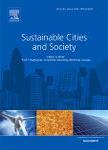版权所有:内蒙古大学图书馆 技术提供:维普资讯• 智图
内蒙古自治区呼和浩特市赛罕区大学西街235号 邮编: 010021

作者机构:Southeast Univ Sch Architecture Inst Architecture Algorithm & Applicat Nanjing Jiangsu Peoples R China Wuhan Univ Sch Urban Design Wuhan Hubei Peoples R China Southeast Univ Sch Instrument Sci & Engn Nanjing Jiangsu Peoples R China Southeast Univ Sch Architecture Nanjing Jiangsu Peoples R China
出 版 物:《SUSTAINABLE CITIES AND SOCIETY》 (Sustainable Cities Soc.)
年 卷 期:2019年第45卷
页 面:588-595页
核心收录:
学科分类:0820[工学-石油与天然气工程] 082803[工学-农业生物环境与能源工程] 08[工学] 0828[工学-农业工程] 0814[工学-土木工程] 0833[工学-城乡规划学]
基 金:National Key R&D Program of China [2017YFC0702302, 2017YFC0702300] Natural Science Foundation of Jiangsu Province of China [BK20160696] National Natural Science Foundation of China [61601123, 51408442] Introduction of Talent Research Start-up Fund Hubei Provincial Natural Science Foundation of China [2018CFB570] Innovative and Entrepreneurial Talent Foundation of Jiangsu Province of China
主 题:Occupant trajectory Convolutional autoencoder Indoor positioning system
摘 要:Building energy consumption is influenced not merely by the energy-saving performance of hardware but also by the occupants indoor behaviours. Advances in indoor positioning technologies can generate large volumes of spatial trajectory data on the occupants, which can reveal the distribution of the occupants or be interpreted to reflect the occupants behaviours. This calls for systematic research on new computing technologies to identify information from trajectory data rather than from visualizations or statistics. Due to the imperfections and complexities of trajectory data, few robust techniques are available for similarity comparisons, which are critical for further clustering and pattern mining. In this work, we propose a novel means of evaluating similarities in occupant trajectory data based on the use of a convolutional autoencoder (CAE). Trajectory data can be compared and their feature vectors extracted with the CAE in an unsupervised manner. We applied this approach to high-precision tracking data collected from an ultra-wide band (UWB) indoor positioning system (IPS) installed in an exhibition hall. The calculated results show that our approach offers great advantages in terms of its application, robustness, and flexibility.